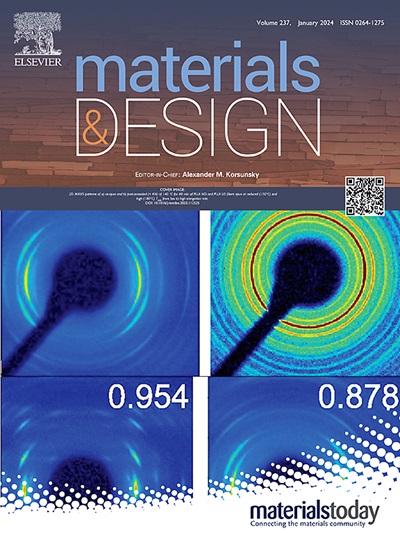Tailor-made 3D printing TPU/PLA composites for damping and energy absorption
IF 7.6
2区 材料科学
Q1 MATERIALS SCIENCE, MULTIDISCIPLINARY
引用次数: 0
Abstract
Commercially available thermoplastic polyurethane (TPU) materials for 3D printing often exhibit inadequate damping properties, limiting their application in damping scenarios. However, 3D printing TPU filaments specifically engineered for enhanced damping performance frequently lack sufficient stiffness, causing printing continuity issues. To address these challenges, this study investigates the rational design of TPU composites by regulating TPU molecular structure and incorporating polylactic acid (PLA) to enhance both damping performance and stiffness. The results reveal that a prepolymer curing coefficient of 2.0, combined with a chain extender ratio of Dimethyl thio-toluene diamine (DMTDA) to 1,4-Butanediol (BDO) at 5:5, optimizes the damping and mechanical properties of the TPU material. Furthermore, by incorporating 30 wt% PLA particles into the TPU matrix, the obtained TPU7/PLA3 composite filament has excellent printability and admirable damping properties with a peak damping value of 0.60 around room temperature and an effective damping temperature range exceeding 100 °C. A lattice structure resembling Kelvin foam was successfully fabricated using the TPU/PLA filaments, demonstrating superior damping performance compared to commercial TPU filaments and underscoring its potential for energy absorption applications.

求助全文
约1分钟内获得全文
求助全文
来源期刊

Materials & Design
Engineering-Mechanical Engineering
CiteScore
14.30
自引率
7.10%
发文量
1028
审稿时长
85 days
期刊介绍:
Materials and Design is a multi-disciplinary journal that publishes original research reports, review articles, and express communications. The journal focuses on studying the structure and properties of inorganic and organic materials, advancements in synthesis, processing, characterization, and testing, the design of materials and engineering systems, and their applications in technology. It aims to bring together various aspects of materials science, engineering, physics, and chemistry.
The journal explores themes ranging from materials to design and aims to reveal the connections between natural and artificial materials, as well as experiment and modeling. Manuscripts submitted to Materials and Design should contain elements of discovery and surprise, as they often contribute new insights into the architecture and function of matter.
 求助内容:
求助内容: 应助结果提醒方式:
应助结果提醒方式:


